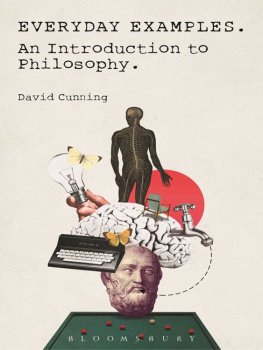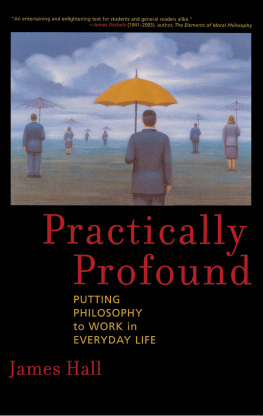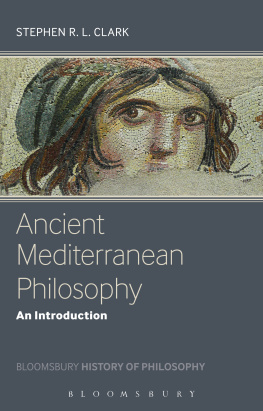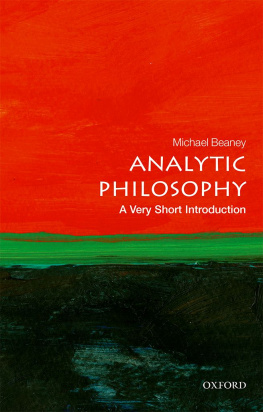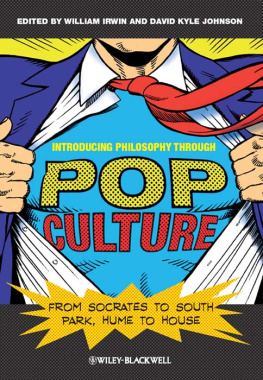Everyday
Examples
ALSO AVAILABLE FROM BLOOMSBURY
101 Great Philosophers, Madsen Pirie
Doing Philosophy, Clare Saunders
Forthcoming titles
Doing More Philosophy, David Mossley
Everyday
Examples
An Introduction to
Philosophy
DAVID CUNNING

CONTENTS
This book is intended as a supplement and tool for university courses and for individuals in the broader public who are curious to explore philosophical views and arguments. An assumption throughout is that philosophy is best learned by doing. The philosophers of history supply a treasure trove of views and arguments, and I attempt to offer accessible and illustrative examples to help students to engage the material and make it their own.
A few prefatory remarks are in order. The first is that although philosophy is an important subject matter, students are sometimes reticent to engage the issues, out of a sense that it is not their turf. My hope is that students are able to bring philosophical issues to life by using accessible examples as a starting point. Students can engage the various views and arguments, and there can be discussion of where there is disagreement and why. Accessible examples are already considered in many classroom discussions, but part of the idea for the book is to help students to work through examples outside of class, as a way to generate further engagement still.
I do not utilize a structure in which arguments are presented in premise-conclusion form, or lay out every possible objection. Part of my concern is that a structure like that can incline the student just to memorize the views and arguments, and to memorize the critical thinking maneuvers by which problems might be raised for them. The views and arguments are instead presented more colloquially. I am attempting a project in which students would confront the ideas for themselves, sort out the different motivations behind them, and then think through the consequences and complications firsthand. Note also that students can proceed in whatever chapter order is fitting, and students can focus on particular sections within a chapter as well.
As befits an introductory discussion, there are details and complications that are bracketed for treatment later on, once the students have a sense of the lay of the land. For example, in the sections on externalist theories of knowledge, there is little treatment of the many different versions of externalism that have been proposed. Instructors might want to expand some of these discussions on their own. By the same token, not every philosophical view or argument or topic is treated, but instead there is a cross-section of material that students will hopefully be excited to dive into and tackle and engage. An aim again is that students get a lot of firsthand practice at doing philosophy.
The text incorporates a number of everyday accessible examples. In a few cases the examples are from popular culture, especially television and film, but those of course have a shelf life. Instead of supposing familiarity, I take steps to flesh out the larger context and then explain their significance to the philosophical issue at hand. Philosophical discourse often operates at a very stratospheric level. I try to fashion the everyday examples to achieve accessibility without compromising rigor.
The book also has a web component, with YouTube videos, comics, songs, newspaper clips, a discussion board and blog, suggested readings, and other resources. The appropriate places in the text are marked by an asterisk (*), with a corresponding link at www.everydayexamples.net. There will be regular updates and additions.
I have attempted to include a broad cross-section of philosophical perspectives, and I have also attempted to include a cross-section of the work of philosophers who are not white men. I try not to make too big a deal of this; its just that a lot of philosophy is done by people who are not in that category. Instead of having a single chapter devoted to these different perspectives, I have interspersed the various discussions throughout the book as topically appropriate.
The book attempts to lay out important arguments that have been offered by the great philosophers of history, but there can be disagreement about the proper interpretation of these arguments. I do not want to suggest that the interpretations that I suppose are the only ones that are legitimate, and I invite students to take issue with my interpretations, and to actively engage in any other way that would be fitting. If some of my interpretations turn out to be controversial (or even mistaken), I hope that they might still help to lay the ground for the discussion of an important philosophical thesis or point.
A number of different philosophical issues are considered in the book, along with a number of different views and arguments that philosophers have presented on the many sides of each issue. I attempt to motivate each argument in a way that highlights the reasons why it is compelling to the side in question. Enough different views and arguments are presented that of course many are not my own, and to be honest I am not sure what to say in the case of a number of the issues that are treated. I am also assuming that my own particular views do not matter much here and that what does matter is taking on the arguments and reasons.
Finally, the structure of the text is unorthodox. There are a number of short sections (around 40 to 50) in each chapter, and each is supposed to be a separate nuggeteither a premise, or an argument, or an objection, or an example. The everyday language of the text invites this sort of structure, and the structure also allows for each point to be finite and manageable. An additional benefit is that students may be assigned an individual section in advance of class, and be resident expert for the day. In some cases I introduce a view or argument that a student might find highly problematic, and I hope the student will take it on directly. That is a very important part of the project here. Each chapter also contains a set of discussion questions for students to addressthey might write on one of these at the start of class, as the basis for discussion, or students might discuss the questions in a group. An implicit proposal in each of the study questions is for the student to illustrate their response with an example.
I am indebted to a number of people for their extremely helpful comments as the textbook was in progress. These include Matthew Drabek, Michael Eng, Peter Fosl, Seth Jones, Tammy Nyden, Simone Renault, Samuel Taylor, and Emily Waddle.
I am also very grateful for the assistance and support of Liza Thompson, Colleen Coalter, Mat Nichols, and Chloe Shuttlewood at Bloomsbury Academic Publishing. And I am grateful to Srikanth Srinivasan at Newgen for his extremely careful and generous editorial work.
I also need to thank Naomi Greyser and Mira Grey Cunning. Their support is constant and unwavering.
Finally I would like to express gratitude to my father, Robert Cunning. He passed away as the book was in press, but I was very lucky to be able to share draft chapters with him. Our conversations were always lively and illuminating. I am grateful for his insightful feedback and for his many other influences.
Abstract
This chapter will consider: whether or not our perception of the external world might be a massive hallucination; commonsense responses to skepticism; internalist versus externalist views of knowledge; the view that our experience of reality is heavily shaped by contributions from our own end; the impact of technology and social media on perspective; and standpoint epistemology.
Next page
